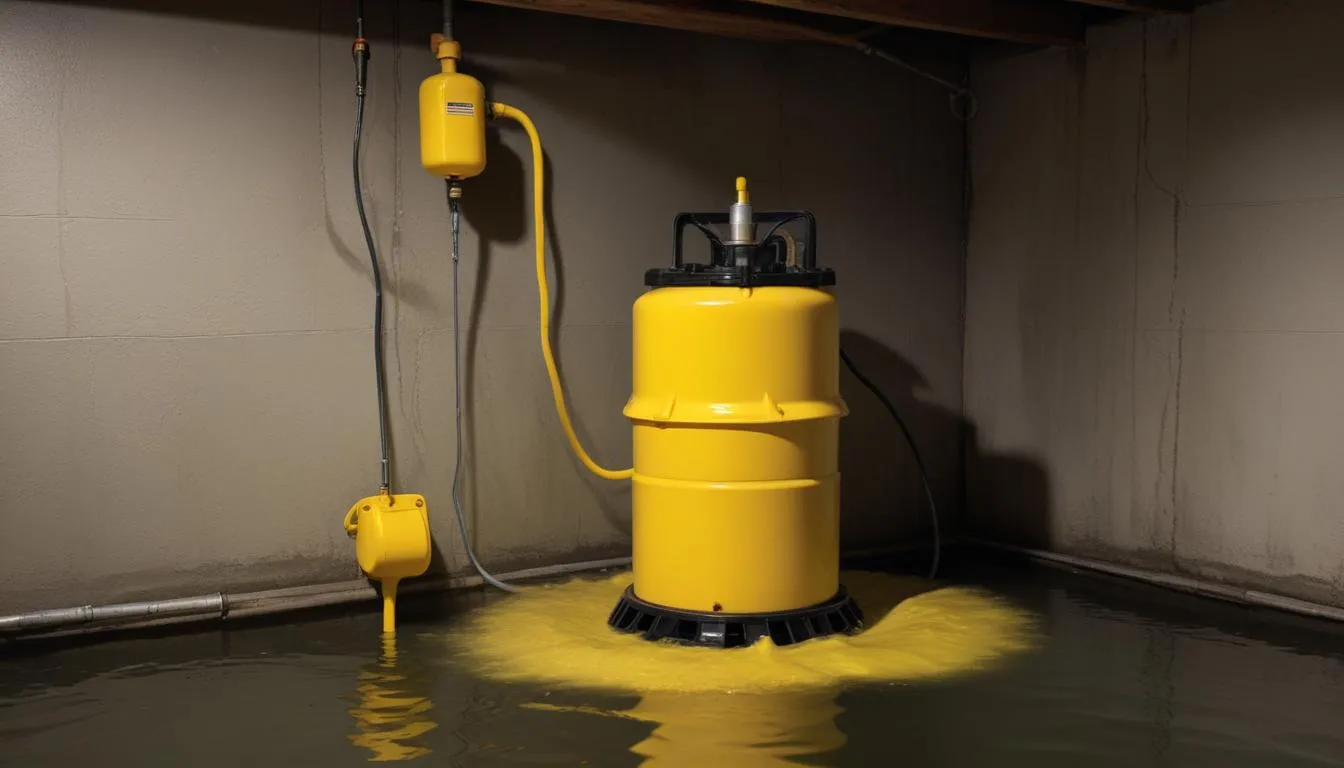 When selecting a sump pump, it’s important to consider several factors to ensure you choose the right one for your specific needs. Here are some key points to guide you in your decision-making process:
When selecting a sump pump, it’s important to consider several factors to ensure you choose the right one for your specific needs. Here are some key points to guide you in your decision-making process:
- Type of Sump Pump: There are two main types of sump pumps: submersible and pedestal. Submersible pumps are installed underwater in the sump pit and are quieter, while pedestal pumps are positioned above the pit and are easier to access for repairs.
- Pump Capacity: The capacity of a sump pump is measured in GPH (gallons per hour) or HP (horsepower). Determine the volume of water you expect to manage, especially during heavy rains, and choose a pump that can handle at least 1,500 to 3,000 GPH for residential applications.
- Switch Type: The pump’s switch mechanism is critical for automation. Consider whether you prefer a float switch, which activates based on water level, or a pressure switch, which responds to changes in pressure.
- Warranty and Brand Reputation: Look for reputable brands that offer warranties of at least three to five years. Reading reviews and consumer feedback can give you insights into the reliability of various sump pumps.
- Power Supply: Ensure that your sump pump has sufficient power supply options. Many pumps operate on standard 120-volt outlets, but some may require a dedicated circuit.
By taking these factors into account, you can make an informed decision and choose the best sump pump to ensure efficient water management during rainstorms and flooding.
Required tools and materials
To successfully install a sump pump, you will need to gather several tools and materials prior to starting the installation process to ensure it goes smoothly. Here’s a comprehensive list to guide you:
Tools Required:
- Sump Pump – Choose the pump based on your earlier selection criteria.
- Drill – A power drill is essential for making holes in the concrete if necessary.
- Hole Saw – This is used for cutting out larger holes for the discharge pipe.
- Level – A level helps ensure that your sump pump is installed evenly.
- PVC Pipe Cutter – A tool necessary for cutting pipes to the required lengths for installation.
- Wrenches – Adjustable wrenches will assist in securing all connections tightly.
- Bucket or Container – To collect any water that may need to be drained from the sump pit during installation.
- Tape Measure – For measuring distances accurately when placing the sump pump.
Materials Required:
- Sump Pump – As discussed, choose the right sump pump for your needs.
- PVC Pipes – These will be used for the discharge line, typically ¾ inch or 1 inch in diameter.
- PVC Fittings – Elbows, tees, and other fittings to direct the water flow appropriately.
- Check Valve – This prevents water from flowing back into the sump pit once it has been pumped out.
- Sealant or Adhesive – Use a strong waterproof sealant to secure the joints of the PVC plumbing.
- Gravel – A few bags of gravel may be needed for backfilling the sump pit after installation.
- Extensions or Hoses – To guide water away from the basement and foundation, you may need extension pipes or discharge hoses.
By gathering all the necessary tools and materials beforehand, you can ensure that the installation will proceed without unnecessary delays or complications. Having these items ready will allow you to focus on effective and efficient installation techniques, resulting in a well-functioning sump pump system.
Step-by-step installation process
Begin by identifying the right location for your sump pump. This is typically at the lowest point of your basement or crawl space. Use a tape measure to determine the ideal spot within the designated sump pit. Once you’ve chosen the location, follow these steps for installation:
1. Prepare the Sump Pit:
– If you don’t already have a sump pit, you’ll need to excavate a hole approximately 2 feet wide and 2 feet deep. Use a power drill along with a hole saw to create the opening, ensuring that the walls are straight and level.
2. Create Drainage:
– Install a drainage system by laying down gravel at the bottom of the pit. This gravel will help filter debris and improve water flow. Aim for about 6 inches of gravel to create a solid base.
3. Position the Sump Pump:
– Place the sump pump in the center of the pit on top of the gravel. Use a level to ensure it sits evenly. The pump should be at least 3 inches above the bottom of the pit to prevent clogging.
4. Connect the Discharge Pipe:
– Cut the appropriate lengths of PVC pipe using a PVC pipe cutter. Attach the discharge pipe to the outlet of the pump. Ensure a tight fit by applying sealant or adhesive to each joint.
5. Install the Check Valve:
– A check valve is critical to prevent backflow into the sump pit. Position this valve on the discharge pipe as close to the pump as possible. Make sure it’s facing the correct direction, allowing water to flow out but not back in.
6. Create the Discharge Path:
– Extend the discharge pipe away from the foundation at least 10 feet to prevent water from returning to your basement. You may need to use additional extensions or hoses to achieve this.
7. Test the Installation:
– Before covering up the pit, it’s smart to test the system. Pour a few buckets of water into the pit to see if the pump activates correctly. Ensure that the water is discharged away from the foundation.
8. Backfill the Pit:
– Once testing is complete and you’re satisfied with the operation of the sump pump, backfill the pit with gravel while leaving the pump accessible for any future maintenance.
By following these steps, your sump pump installation should be successful and efficient, ensuring effective water management in your home.
Testing your sump pump
 To ensure your sump pump operates effectively, it’s crucial to conduct thorough testing after installation. Proper testing will confirm that your system is functioning as intended and can handle unexpected water inflow. Follow these procedures to test your newly installed sump pump:
To ensure your sump pump operates effectively, it’s crucial to conduct thorough testing after installation. Proper testing will confirm that your system is functioning as intended and can handle unexpected water inflow. Follow these procedures to test your newly installed sump pump:
1. Initial Power Check:
– Before you begin your testing, confirm that the sump pump is plugged into a functioning electrical outlet. Check for any tripped circuit breakers or blown fuses that may affect the power supply.
2. Simulate Water Flow:
– To test the pump, pour several buckets of water into the sump pit. This simulates a heavy rain scenario. Monitor the pump’s response as the water level rises. An efficient sump pump should activate once the water reaches a specific level.
3. Observe Pump Activation:
– Pay attention to the sound and operation of the pump when it activates. It should turn on smoothly and begin to remove water promptly. If there are unusual noises, such as grinding or rattling, further investigation may be required.
4. Check Discharge Efficiency:
– As the pump removes water, observe the water flow through the discharge pipe. Ensure that the water is being expelled away from your home’s foundation, ideally at least 10 feet from the house. This helps prevent water from seeping back into the basement.
5. Examine the Check Valve Function:
– Ensure the check valve is performing its role effectively. After the pump shuts off, there should be no water flowing back into the sump pit. If you notice water returning, the check valve may need to be adjusted or replaced.
6. Review Float Switch Operation:
– Watch how the float switch engages. The float should rise with the water level and trigger the pump consistently at the right level. If it gets stuck or fails to activate, consider adjusting its position or replacing it.
7. Monitor for Leakage:
– Inspect all connections, including the discharge pipe and check valve, for leaks while the pump is operating. Tightening any loose fittings and ensuring all joints are sealed will prevent water seepage.
8. Conduct Periodic Testing:
– Schedule regular testing of your sump pump, especially after heavy rains or seasons of high water levels. This proactive approach helps ensure that your pump is always prepared for emergency situations.
By following these testing procedures, you can confirm that your sump pump is ready for use, ensuring peace of mind against water accumulation in your basement. Regular checks will extend the longevity of your system and enhance its reliability in protecting your home from flooding.
Maintenance tips for longevity
To ensure the longevity of your sump pump and optimize its performance, it’s vital to incorporate a regular maintenance routine. Consistently following these maintenance tips will help you avoid costly repairs and ensure your sump pump operates effectively whenever it’s needed.
- Regular Inspection: Perform visual inspections of your sump pump at least once a month. Check for any signs of wear or damage, paying particular attention to the electrical cord and connections. Look for rust or corrosion on metal parts, as these can indicate potential failure points.
- Clean the Sump Pit: Remove any debris, dirt, or sediment that has accumulated in the sump pit to prevent blockages. A clean sump pit promotes better water flow and reduces strain on the pump, ensuring it runs efficiently.
- Test the Pump: Conduct a water test every three to four months by pouring several buckets of water into the pit. This practice confirms that the pump activates properly and helps familiarize you with its operation. Observe how quickly it pumps the water out and whether it turns off correctly.
- Check the Discharge Pipe: Regularly inspect the discharge pipe for any obstructions or damage. Ensure that the pipe is clear and directed away from your foundation. Any clogs can cause water to back up and may lead to basement flooding.
- Monitor the Float Switch: Ensure the float switch operates smoothly without any obstructions. It should move freely and trigger the pump when the water reaches a certain level. If it appears to stick or malfunction, clean or adjust its position as necessary.
- Change the Battery (for Battery Backup Pumps): If your sump pump uses a battery backup system, replace the battery according to the manufacturer’s recommendations, usually every 2-3 years. A reliable charge will ensure your sump pump works during power outages.
- Winter Preparation: In regions that experience freezing temperatures, it’s vital to protect your sump pump. Insulate the discharge pipe to prevent freezing, and check the sump pump operation before winter sets in.
- Professional Servicing: Consider having a professional inspection at least once a year. An experienced technician can identify issues that may not be apparent during routine checks and recommend necessary repairs or upgrade options.
By implementing these maintenance tips, you can significantly enhance the lifespan of your sump pump and ensure that it remains in excellent working condition, ready to protect your basement from unwanted water intrusion when it matters most. Remember, proactive maintenance is key to reliable sump pump performance and reducing the risk of future flooding issues.